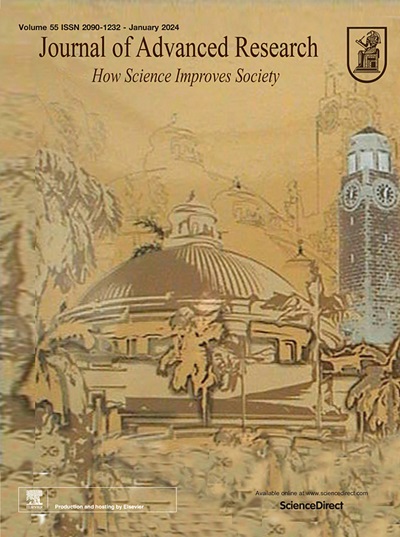HnRNPR-mediated UPF3B mRNA splicing drives hepatocellular carcinoma metastasis
IF 11.4
1区 综合性期刊
Q1 MULTIDISCIPLINARY SCIENCES
引用次数: 0
Abstract
Introduction
Abnormal alternative splicing (AS) contributes to aggressive intrahepatic invasion and metastatic spread, leading to the high lethality of hepatocellular carcinoma (HCC).
Objectives
This study aims to investigate the functional implications of UPF3B-S (a truncated oncogenic splice variant) in HCC metastasis.
Methods
Basescope assay was performed to analyze the expression of UPF3B-S mRNA in tissues and cells. RNA immunoprecipitation, and in vitro and in vivo models were used to explore the role of UPF3B-S and the underlying mechanisms.
Results
We show that splicing factor HnRNPR binds to the pre-mRNA of UPF3B via its RRM2 domain to generate an exon 8 exclusion truncated splice variant UPF3B-S. High expression of UPF3B-S is correlated with tumor metastasis and unfavorable overall survival in patients with HCC. The knockdown of UPF3B-S markedly suppresses the invasive and migratory capacities of HCC cells in vitro and in vivo. Mechanistically, UPF3B-S protein targets the 3′-UTR of CDH1 mRNA to enhance the degradation of CDH1 mRNA, which results in the downregulation of E-cadherin and the activation of epithelial–mesenchymal transition. Overexpression of UPF3B-S enhances the dephosphorylation of LATS1 and the nuclear accumulation of YAP1 to trigger the Hippo signaling pathway.
Conclusion
Our findings suggest that HnRNPR-induced UPF3B-S promotes HCC invasion and metastasis by exhausting CDH1 mRNA and modulating YAP1-Hippo signaling. UPF3B-S could potentially serve as a promising biomarker for the clinical management of invasive HCC.

HnRNPR 介导的 UPF3B mRNA 剪接驱动肝细胞癌转移。
简介:异常替代剪接(AS)会导致肝细胞癌(HCC)的侵袭和转移扩散:异常替代剪接(AS)有助于肝内侵袭和转移扩散,导致肝细胞癌(HCC)的高致死率:本研究旨在探讨UPF3B-S(一种截短的致癌剪接变体)在HCC转移中的功能影响:方法:采用Basescope法分析UPF3B-S mRNA在组织和细胞中的表达。结果:我们发现,剪接因子 Hnn 在 HCC 转移过程中起着重要作用:结果:我们发现剪接因子HnRNPR通过其RRM2结构域与UPF3B的前mRNA结合,生成外显子8排斥截短的剪接变体UPF3B-S。UPF3B-S的高表达与HCC患者的肿瘤转移和不利的总生存率相关。敲除UPF3B-S可显著抑制HCC细胞在体外和体内的侵袭和迁移能力。从机理上讲,UPF3B-S蛋白靶向CDH1 mRNA的3'-UTR,增强CDH1 mRNA的降解,从而导致E-cadherin下调,激活上皮-间质转化。UPF3B-S的过表达增强了LATS1的去磷酸化和YAP1的核聚集,从而触发了Hippo信号通路:我们的研究结果表明,HnRNPR诱导的UPF3B-S通过耗尽CDH1 mRNA和激活YAP1-Hippo信号通路促进了HCC的侵袭和转移。UPF3B-S有可能成为临床治疗侵袭性HCC的一种有前景的生物标志物。
本文章由计算机程序翻译,如有差异,请以英文原文为准。
求助全文
约1分钟内获得全文
求助全文
来源期刊

Journal of Advanced Research
Multidisciplinary-Multidisciplinary
CiteScore
21.60
自引率
0.90%
发文量
280
审稿时长
12 weeks
期刊介绍:
Journal of Advanced Research (J. Adv. Res.) is an applied/natural sciences, peer-reviewed journal that focuses on interdisciplinary research. The journal aims to contribute to applied research and knowledge worldwide through the publication of original and high-quality research articles in the fields of Medicine, Pharmaceutical Sciences, Dentistry, Physical Therapy, Veterinary Medicine, and Basic and Biological Sciences.
The following abstracting and indexing services cover the Journal of Advanced Research: PubMed/Medline, Essential Science Indicators, Web of Science, Scopus, PubMed Central, PubMed, Science Citation Index Expanded, Directory of Open Access Journals (DOAJ), and INSPEC.
 求助内容:
求助内容: 应助结果提醒方式:
应助结果提醒方式:


